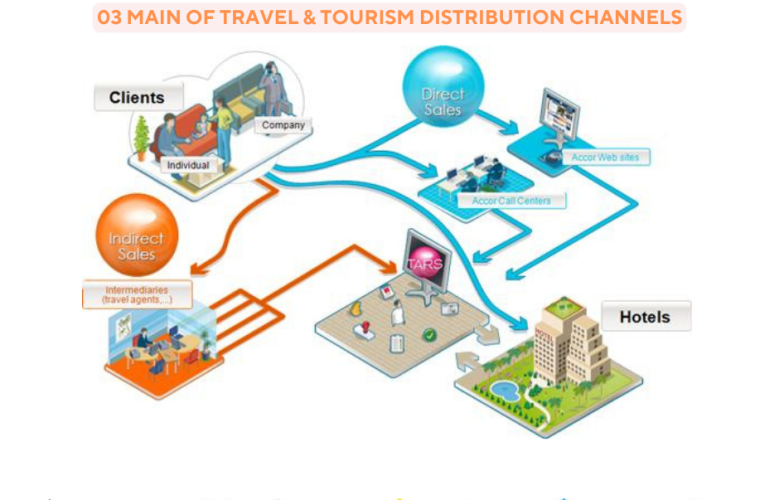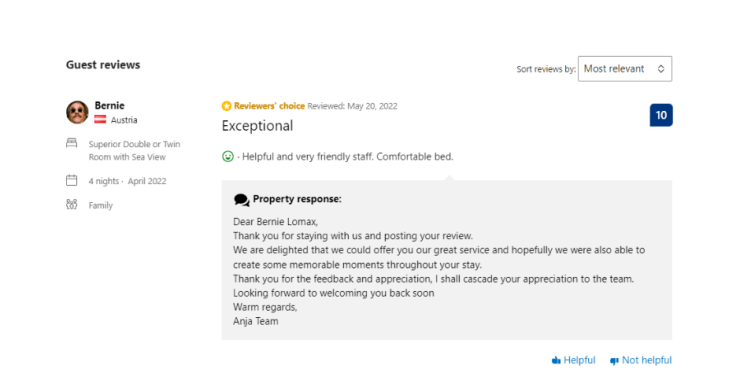03 main of Travel & Tourism Distribution Channels
For the owners and employees of travel businesses, it’s important to have a good understanding of the distribution channels available to you. The digital revolution means there is a wide choice of online channels today. But do not forget your strategic partnerships and offline channels too. To avoid spending unnecessary time and money, you need to know which channels do the best job of getting your travel products in front of your target audience.
But before we look at the various sales and marketing avenues at your disposal, we need to focus on the chain of distribution first. In order to maximize opportunities and efficiencies, it’s essential to understand the chain of distribution and where your company is positioned within the chain.
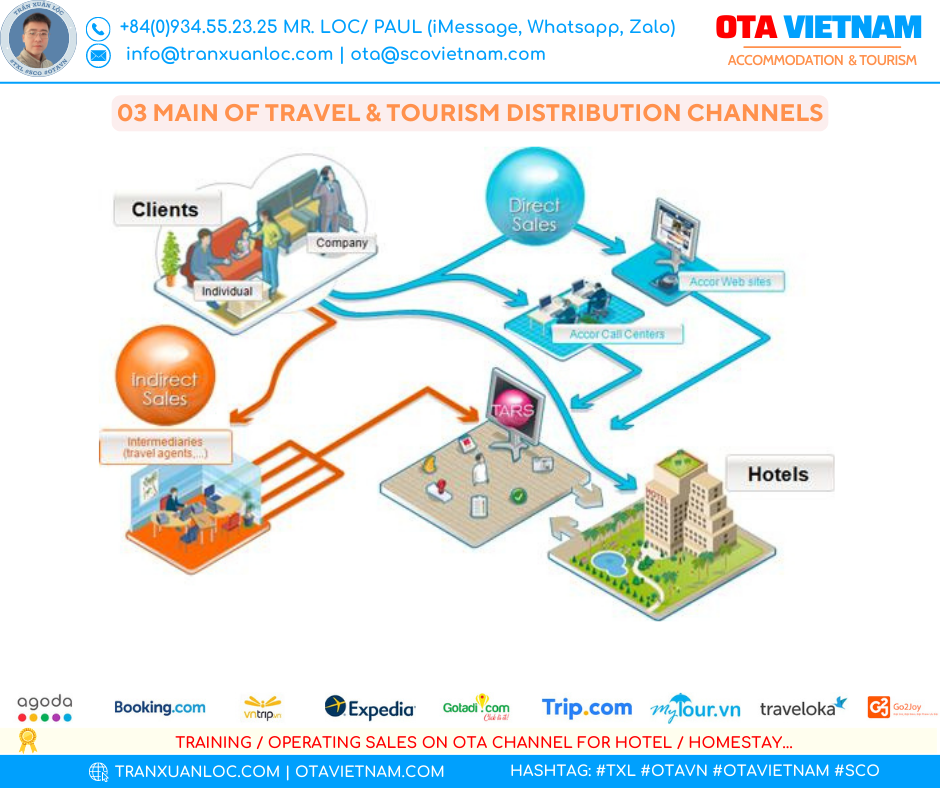
Eng Otavn Otavietnam 940x788px 03 Main Of Travel Tourism Distribution Channels1
What is a tourism distribution channel?
As a B2C travel agent or tour operator, distribution channels represent the various ways to sell or market your product. You need to have a multi-channel presence to maximize your sales opportunities and brand presence, and to reduce your risk. There is specialized tour operator software that can help you manage this workload more efficiently. At the same time, depending on the size of your business and the resources you have available, it could be an error to spread yourself too thinly over too many channels.
Choosing the best distribution channels for your business needs to be done with care and attention. Generally speaking, we can divide distribution into three main categories: online channels, strategic partnerships and offline channels (see Chart 3).
The travel and tourism chain of distribution
Generally speaking, there are four key stages within the chain of distribution. These are: principals, wholesalers & aggregators, retailers, and consumers (see chart 1).
The Travel and Tourism Chain of Distribution
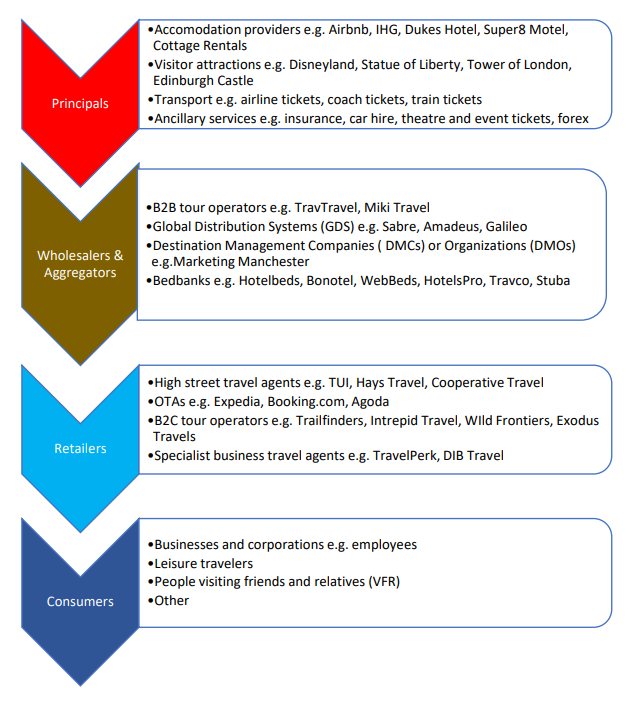
Principals
The principals are the separate components of a travel product. For example, a leisure traveler buys a three-night stay in Paris that includes flights, accommodation, entrance to the Louvre and the Eiffel Tower, with other ancillary services such as travel insurance and foreign exchange thrown in too. In this case, each of the principals could have been sold separately. Instead, they were bundled together by a travel business and sold as a mini-break promotion.
Tour operators take various components of the travel experience and create a travel product which is then traditionally sold by a travel agent.
At the wholesaler stage in the distribution chain, the tour operator is providing a business-to-business (B2B) service by selling the product to a travel agent who then sells it to the consumer (a B2C service). They have their tour operator business plan which they follow to provide the best options to other travel-related businesses.
A global distribution system (GDS) is a computer system that holds records of availability from airlines, hotels, and car hire. Retailers such as OTAs and B2C travel agents are able to directly access this inventory.
As the oldest type of distributor in the travel industry, GDS are predominantly involved in the sale of air tickets rather than accommodation.
Destination Management Companies (DMCs) or Destination Management Organizations (DMOs) often contract travel products and sell on packages and itineraries relevant to their destination to a tour operator.
A bed bank is a B2B company that buys rooms from hotel groups and other accommodation providers in bulk at discounted and fixed prices for specific dates.
Some bed banks might also sell ancillary services such as tickets to visitor attractions or car hire.
Bed banks are middlemen, or intermediaries, between hotel companies and retailers. They might sell on their discounted bulk accommodation products to airlines, other bed banks, travel agents, OTAs or tour operators (see Chart 2).
Chart 2: Bed Bank Distribution Chain
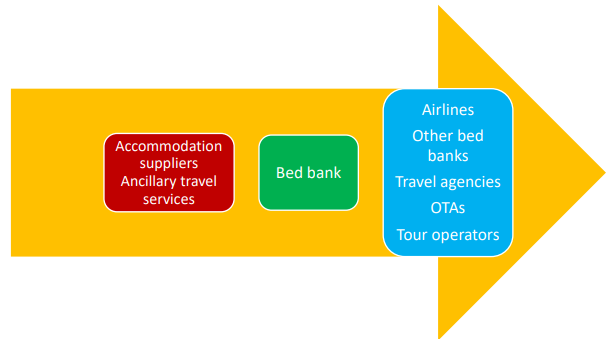
Retailers and consumers
Retailers are the organizations that sell the travel products directly to the consumer. These include traditional travel agents with a physical store in the high street such as TUI, Hays, and Cooperative Travel in the UK, for example.
Other travel retailers are found online and include OTAs, B2C tour operators, and travel agents that specialize in business travel. Consumers are the end-users who buy the travel products or services. The main types of consumers are business travelers, leisure tourists (either domestic or international) and people who are visiting friends or relatives.
Variations in the chain of distribution
Chart 1 identifies the four key stages in the chain of distribution, although this process can vary and be more direct or indirect. For instance, a leisure traveler booking accommodation directly from a hotel website means there is only one stage in the chain. A bed bank that sells to another bed bank, results in five stages in the chain.
The wholesaler and retailer stages may be carried out by the same company. This is known as vertical integration, which happens when two or more organizations at different stages in the supply chain merge.
It is fairly common for tour operators and travel agents to buy each other. After all, the role of tour operators in sustainable tourism is quite significant. When mergers occur at the same level in the distribution chain, this is called horizontal integration.
The original brand names are often retained, so consumers may not be aware that booking.com, KAYAK, Agoda and priceline, for instance, are all owned by one company: Booking Holdings. Digitalization and corporate mergers have resulted in plenty of crossover and consolidation in the travel and tourism distribution system.
03 main of Travel & Tourism Distribution Channels
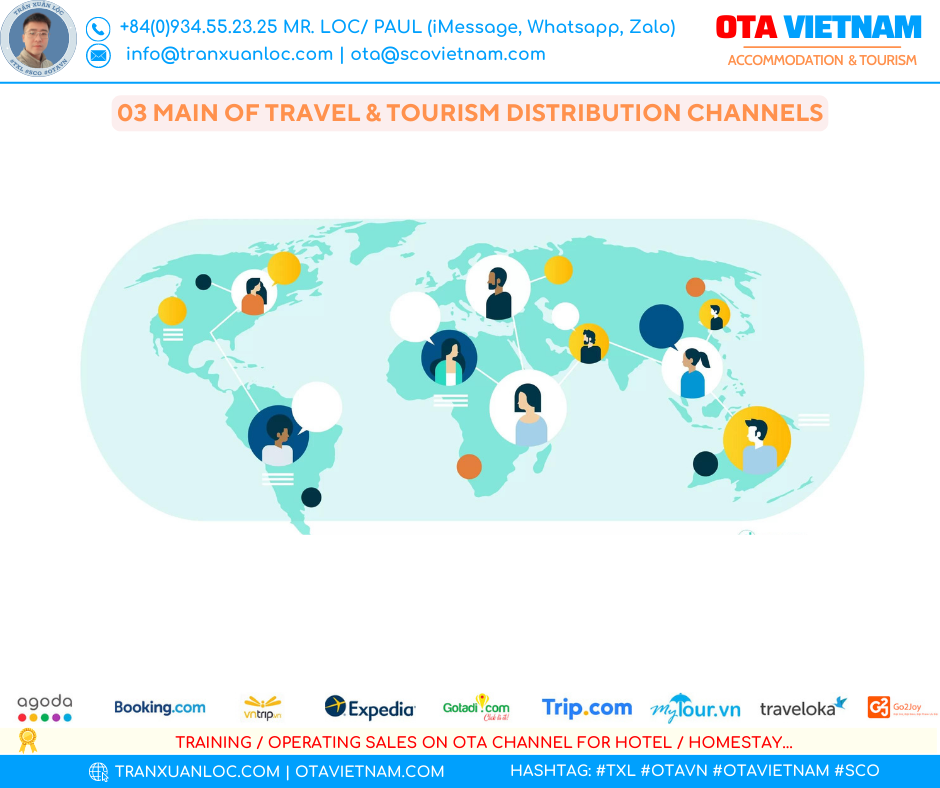
Eng Otavn Otavietnam 940x788px 03 Main Of Travel Tourism Distribution Channels2
Online channels agents (OTA)
As a tour operator or travel agent, the overriding benefit of optimizing your own website is that you pay no commission on direct bookings and have full control over how consumers interact with your brand.
Being listed on Google My Business is essential today. Google is the default destination for most consumers to gather information of any kind. Your listing will come up in Google searches and on Google Maps and registering is free.
Online travel marketplaces like Bookmundi and Viator have large audiences. Most are free to join but take a significant amount of sales commission, so monitor performance carefully.
Select one or two and keep your profile and listings current. The same goes for review sites such as Tripadvisor and TrustPilot. Only concentrating your energies on one or two review sites is a sensible strategy.
Channel managers, such as HRS, provide a service that sources hotel accommodation for corporate clients from a wide variety of OTAs instead of the client having to go directly to each separate OTA.
Similarly, instead of having individual accounts with OTAs, many hotel companies – big and small – will use channel management technology.
Omnibees, for example, allows hoteliers to sell to end-users and intermediaries through a single platform connected to the hotel’s property management system. Such solutions can automate sales and reduce the amount of commission paid by hotels.
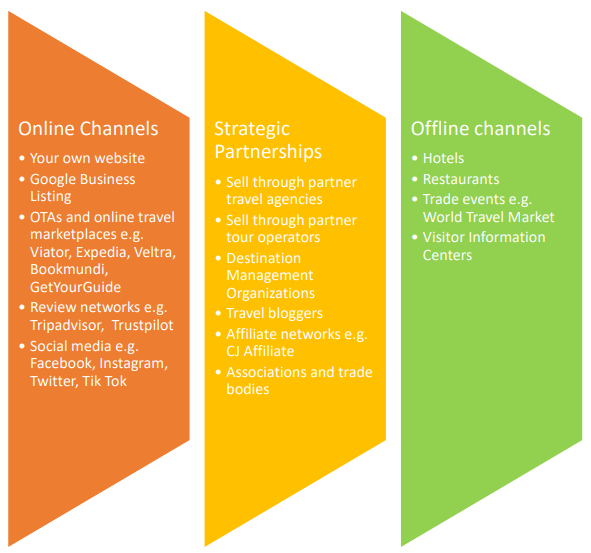
Strategic partnerships
Working with other travel agents or tour operators is a great way to increase your sales. Working directly with Destination Marketing Organizations (DMO) will allow travelers to book with you directly when you advertise on the DMO website.
Building a relationship with travel bloggers will help get your name out there, as will close involvement with trade bodies associations.
To attract more bookings made directly on your website, affiliate digital marketing services are an option.
Offline channels
It would be a mistake to overlook offline distribution channels. The worldwide web may give you global reach, but cross-selling partnerships with local businesses such as stores, restaurants, cafes and hotels can turn out to be extremely valuable distribution channels.
Visitor information centers can be useful too because many tourists do not book tours and activities until they are in the destination. Attending trade shows and industry events can be costly, especially for small businesses, but the resulting contacts and sales leads are often invaluable.
